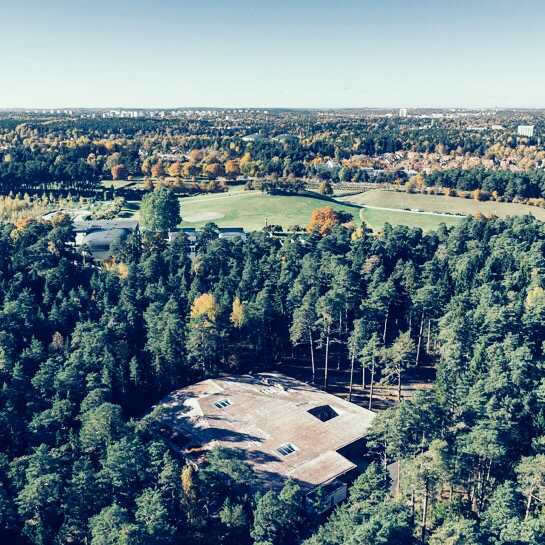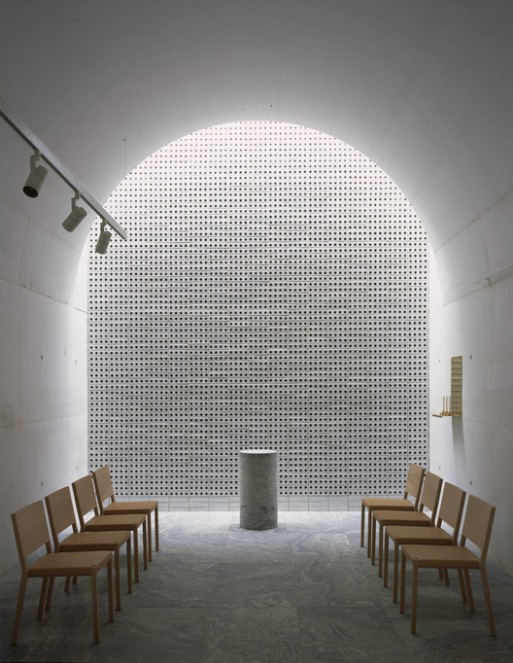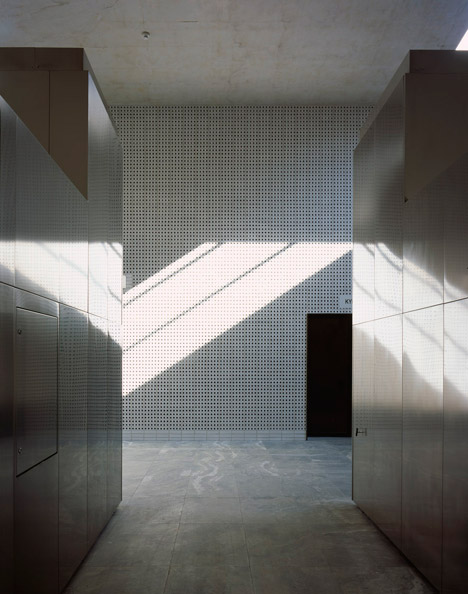
The New Crematorium at the Woodland Cemetery in Stockholm, Sweden
(Credit: Celsing.se)
Creating a crematorium for a landmark Unesco World Heritage Site cemetery is no small task, but Swedish architect Johan Celsing went above and beyond expectations. Indeed, his 2013 addition of a new crematorium to Stockholm’s architecturally famous Woodland Cemetery has kept with the spirit of the site’s inspiration, while continuing to make us wonder: how do we decide what is an appropriate environment in which to visit our dead?
Woodland Cemetery make[s] us wonder: how do we decide what is an appropriate in which to visit our dead?
It all started in 1912, at an international competition that was held in Sweden to find an architect worthy of creating a cemetery for the nation’s capital, Stockholm. The design had to be “efficient without sacrificing any of its artistic merits and without undue alteration of the natural contours of the existing landscape.” In other words, a site that paid homage to many key elements of Swedish culture: tranquility in simplicity, appreciation of nature and a constant integration of natural light. The result? A game-changer in cemetery design.
“When the ancient habit of burning corpses instead of burying them was struggling for a renaissance a century ago, Swedish enthusiasts (yes, there were such) turned to young and progressive architects to create the buildings for this newly revived ceremony,” explains The Architectural Review of the competition, “With Torsten Stubelius, Sigurd Lewerentz devised an exemplary proposal that became the starting point for Lewerentz’s and Erik Gunnar Asplund’s (original 1912) collaboration on the Woodland Cemetery in Stockholm…[a] masterpiece of spiritual architecture and landscape.”
“When the ancient habit of burning corpses instead of burying them was struggling for a renaissance a century ago, Swedish enthusiasts (yes, there were such) turned to young and progressive architects…”
Indeed, the beauty of Woodland is in its versatility — its ability to melt into its serene surroundings. You’re not going to a cemetery, but going to a hillside. You’re visiting the dead you love in nature, and in an untraditional environment that does not necessarily evoke “cemetery,” and thus, creates a gentler space for reflection. John Celsing’s crematorium design pays homage to this goal, and his alterations to the original 1940s cemetery chapel are slight but on-point. Red brick blends into the environment. Viewed from the sky, the building becomes one single, beautiful stone in a forest. Attention was paid to the way the angles receive and throw light, creating stain-glass windows with flight and flexibility.
Celsing, having dubbed his design “A Stone in the Forest,” says that the approach to the building is subdued, almost hesitant. The forest has been made part of the experience. The building lies secretive and compact, barely discernible from the forecourt…one moves forwards but at the same time also upwards, in the manner so typical of the Woodland Cemetery…a soft-spoken setting.”

 The Woodland Cemetery & Crematorium
The Woodland Cemetery & Crematorium




 “Hand to Earth” by Andy Goldsworthy
“Hand to Earth” by Andy Goldsworthy
 Trans Remembrance Project Provides a Community of Grieving
Trans Remembrance Project Provides a Community of Grieving
 Caring for a Dying Loved One? Be Gentle With Yourself.
Caring for a Dying Loved One? Be Gentle With Yourself.














